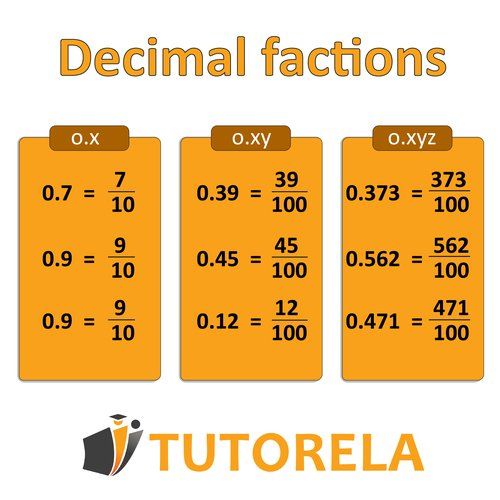So how do we convert a simple fraction to a decimal fraction? First, we can reassure you by saying that the answer is: quite easily. All you need is to understand the technique, and mainly to understand the meaning of the decimal fraction. First, what do decimal fractions look like? They appear in the following form: 0.5, 3.6, and so on. Or in other words: "the fraction with the point".
Converting Decimals to Fractions Practice Problems
Master converting decimal numbers to simple fractions and mixed numbers with step-by-step practice problems, interactive exercises, and detailed solutions.
- Convert decimal numbers like 0.5, 0.25, and 0.125 to simple fractions
- Transform decimals with denominators of 10, 100, and 1000 into fraction form
- Simplify decimal fractions to their lowest terms using greatest common factors
- Convert improper decimal fractions to mixed numbers with whole parts
- Identify the relationship between decimal places and fraction denominators
- Apply conversion techniques to solve real-world decimal-to-fraction problems
Understanding Converting Decimal Fractions to Simple Fractions and Mixed Numbers
Converting a simple fraction to decimal - how to calculate?
In fact, there is a point that creates the boundary between the whole number and the fraction. To convert a simple fraction to a decimal fraction, you need to choose a denominator: 10, 100, or 1000. So how can you also convert "simple" fractions to decimal fractions? Pay attention:
Basic fraction data:
- The line that separates between two different numbers is called the fraction line.
- The top part of the fraction - numerator.
- The bottom part of the fraction - denominator.
Note that when we convert a "classic" simple fraction to a decimal fraction, the fraction line disappears, and a decimal point separates the numbers.

Practice Converting Decimal Fractions to Simple Fractions and Mixed Numbers
Convert into fraction form:
\( 0.06= \)
Examples with solutions for Converting Decimal Fractions to Simple Fractions and Mixed Numbers
Convert into fraction form:
Let's pay attention to where the decimal point is located in the number.
Remember:
One number after the zero represents tens
Two numbers after the zero represent hundreds
Three numbers after the zero represent thousands
And so on
In this case, there are two numbers after the zero, so the number is divided by 100
Let's write the fraction in the following way:
We'll then remove the unnecessary zeros as follows:
Answer:
Convert into fraction form:
Let's pay attention to where the decimal point is located in the number.
Remember:
One number after the zero represents tens
Two numbers after the zero represent hundreds
Three numbers after the zero represent thousands
And so on
In this case, there are two numbers after the zero, so the number is divided by 100
Let's write the fraction in the following way:
We'll then remove the unnecessary zeros as follows:
Answer:
Convert into fraction form:
Let's pay attention to where the decimal point is located in the number.
Remember:
One number after the zero represents tens
Two numbers after the zero represent hundreds
Three numbers after the zero represent thousands
And so on
In this case, there are two numbers after the zero, so the number is divided by 100
Let's write the fraction in the following way:
We'll then remove the unnecessary zeros as follows:
Answer:
Convert into fraction form:
Let's pay attention to where the decimal point is located in the number.
Remember:
One number after the zero represents tens
Two numbers after the zero represent hundreds
Three numbers after the zero represent thousands
And so on
In this case, there are two numbers after the zero, so the number is divided by 100
Let's write the fraction in the following way:
Finally we will remove the unnecessary zeros as follows:
Answer:
Convert into fraction form:
Let's pay attention to where the decimal point is located in the number.
Remember:
One number after the zero represents tens
Two numbers after the zero represent hundreds
Three numbers after the zero represent thousands
And so on
In this case, there are two numbers after the zero, so the number is divided by 100
Let's write the fraction in the following way:
Finally we'll remove the unnecessary zeros as follows:
Answer: